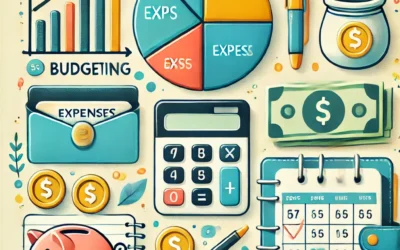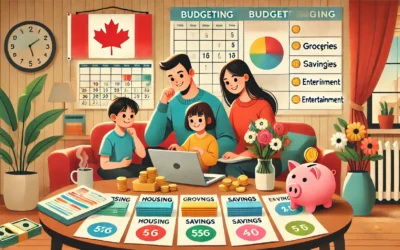What is a Budget?
A budget is a financial plan that helps you manage your money effectively. Just like you plan other aspects of your life, having a plan for your finances is crucial. A well-constructed budget directs your hard-earned income to where it can be utilized efficiently, ensuring you maximize every dollar earned or saved. Budgeting for beginners can be a daunting thought but it doesn’t have to be.
How Do I Set Up a Budget?
Setting up a budget is simpler than it may seem. It involves organizing your finances into income and expenses.
Set Up Goals
Before diving into budgeting, list your financial goals. These goals can range from saving for a vacation, education, retirement, or a down payment on a home, to simply being more aware of your financial health.
Goals can be short-term, medium-term, or long-term, depending on your situation. It’s important to set a timeline for each goal:
- Short-term goals: Achievable within a year.
- Medium-term goals: Attainable within 1-5 years.
- Long-term goals: Goals that take more than 5 years.
Setting financial goals gives you direction when building your budget.
Calculate Your Income
The starting point for any budget is determining your monthly income. Only include your after-tax income to accurately reflect your take-home pay. If you have multiple income streams, include them all, but only list income you are certain to receive.
Calculate Your Expenses
Next, list all your monthly expenses, categorizing them into fixed and variable expenses.
- Fixed Expenses: These are consistent every month and include rent/mortgage, insurance, loans, and car payments.
- Variable Expenses: These fluctuate monthly and include entertainment, groceries, and utilities.
Categorizing expenses helps identify areas to cut back if you’re not meeting your financial goals.
Keeping Track
Tracking expenses is crucial for maintaining an accurate budget. If you don’t record every expense, your budget won’t be effective.
- Credit/Debit Cards: Using these ensures all expenses are recorded and easily accessible.
- Budgeting Apps: Apps like Mint, You Need a Budget (YNAB), Goodbudget, Simple, or Mvelopes allow you to track expenses and save receipts conveniently.
- Manual Tracking: Writing down expenses in a notebook can work, but it requires discipline and regular effort.
Regularly monitor and adjust your budget as needed. Budgets are not “set it and forget it”; they require continual updates to reflect your financial situation.
Budgeting Styles
There are various budgeting methods, each with its own benefits. Choose the one that best suits your needs.
Envelope Method
The envelope method is ideal for those struggling to stay within their budget or prone to overspending. Allocate a set amount of cash for each expense category, placing it in separate envelopes. Once the cash in an envelope is spent, no more can be spent in that category for the month.
Zero-Based Budgeting
In this method, every dollar is allocated, resulting in a budget balance of zero. This doesn’t mean spending every dollar; instead, it includes budgeting for savings. Any leftover money at the end of the month can go towards savings.
50/20/30 Rule
This method allocates your take-home pay into three categories:
- 50% for needs (e.g., rent, insurance, groceries)
- 30% for wants (e.g., entertainment, dining out)
- 20% for savings and debt repayment
Adjust the percentages to fit your individual needs. For instance, if your needs require less than 50%, you can allocate more to savings.
Going the Distance
Maintaining enthusiasm for budgeting can be challenging over time. Consistency is key to seeing results. As you gain experience, budgeting will become an essential tool for making informed financial decisions. Remember, the effectiveness of a budget correlates with the effort you put into it. The more you refine your budget, the more benefits you’ll gain. This guide to budgeting for beginners is your first step towards your journey to mastering budgeting.



